Starting seeds indoors is a fantastic way to get a jumpstart on the growing season, or extend your growing season if it’s too short for some crops like tomatoes and peppers. But chances are, you’ll need to pot up your plants once, possibly even twice before they’re ready to be transplanted into the garden. Here’s everything you need to know about potting up seedlings, how to separate seedlings to prevent stunting their growth, and how to keep them from becoming root-bound.
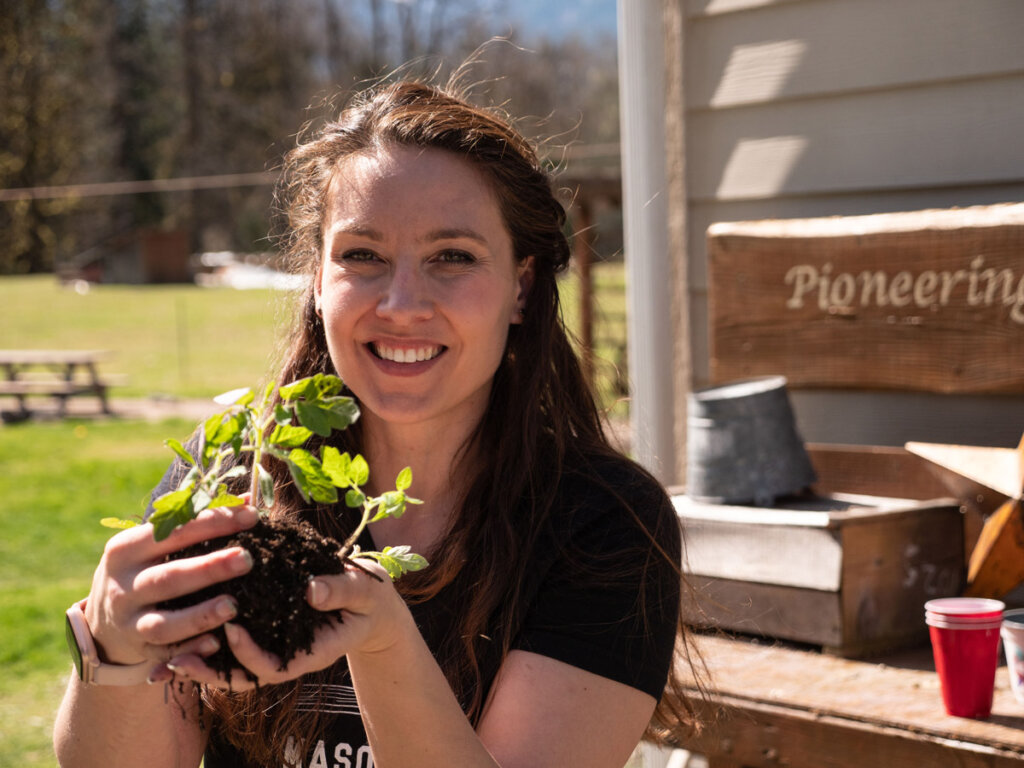
If you’re a first time gardener, there are many basics to know when planning a vegetable garden. If you’re like me, you need to extend the growing season as much as possible on both ends in order to grow a year’s worth of food that you can preserve and put up for your family.
Starting your seeds at home is a great way to get a jumpstart on the season, and using row covers, high-tunnels and other gardening structures can help extend the season on the tail-end.
No matter what what method of gardening you’re using, chances are you want to increase your growing season, harvest, and self-sufficiency as much as is possible.
If you started seeds indoors this year, you may be noticing that some plants need to be potted up or separated out. Potting up seedlings is important in order to keep them from becoming rootbound or overcrowded.
Here are the basics:
Table of Contents[Hide][Show]
When To Pot Up Seedlings
There are many variables when it comes to potting up plants. The type of plant, size of container, how densely the seeds were started, whether you thinned the seedlings, and when you started the seeds indoors (how long before the last frost).
Plant Type
If you’ve ever grown pepper plants beside tomato plants then you’ve surely noticed that the tomatoes germinate and sprout up much more quickly than the peppers. They also mature and outgrow their tiny pots faster, needing to be potted up sooner than peppers.
Herbs are another plant that can stand to be in a smaller pot longer than other plants. Although, depending on how densely you planted them, they may be in need of nutrition sooner than others.

Subscribe to Melissa K. Norris!
Get updates on the latest posts and more from Melissa K. Norris straight to your inbox.
We use your personal data for interest-based advertising, as outlined in our Privacy Notice.
Container Size
I’ve been asked many times before, “If plants always need to be potted up, why don’t we just start them in a larger container to begin with?”
This is a great question, and there are multiple reasons why one should start seeds in a smaller container:
- Better water control (it’s easy to overwater larger containers)
- More plants to fit under the grow lights
- More plants to fit on a heat mat (if using)
- Less space needed indoors for seedlings
Keeping consistent moisture on your seedlings is a time-consuming task, if you have more pots with more soil in them, this task is going to take much longer each day. Trust me when I say you’ll spend more time watering than the time it takes to pot up your seedlings.
Also, if you’re using grow lights (which most of us should be doing as seedlings need 8-10 hours of sunlight, or 16 hours of artificial grow lights, each day), you can fit more seedlings under one light, eliminating the need to buy more lights.
For those who like to use heat mats, if you’re starting your seeds in larger pots, the heat mats may not be able to heat the soil all the way through to the seed. Not to mention, it’s much easier to fit a tray of 24 cells onto a heat map than 24 – 6″ containers.
And finally, when I start my seeds indoors I set them over on the floor between my kitchen and living room. I don’t mind keeping a few clamshell containers over there, but if I started each of my plants in a 6″ container, I’d have plants all over my living room floor! No thanks!
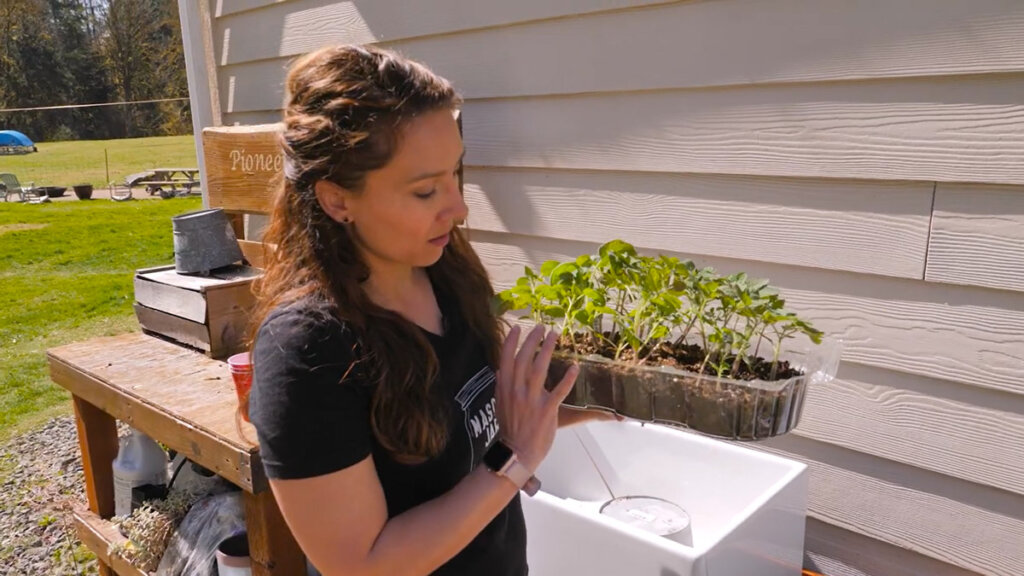
Planting & Thinning
How densely you planted your seeds and whether you thinned your seedlings as they sprouted will also determine how quickly you need to pot up your plants.
As you can see in my video, I planted my tomato plants pretty densely in a large clamshell container. Because of this, they were beginning to compete to reach the light, so it was time for them to each get their own container.
If you plant 4-5 seeds per tiny cell, then thin them out once they germinate and sprout, you can possibly wait a few more weeks before potting up.
Timing
Knowing when your average last frost date is will help you know how long until the plants can be transplanted outdoors. If the plants can’t go outside for at least another 2-4 weeks and the plant is already outgrowing its current pot, you should pot up.
Likewise, if you can see some of the roots poking out from the bottom of the cell, that’s a good sign that the plant is outgrowing its home.
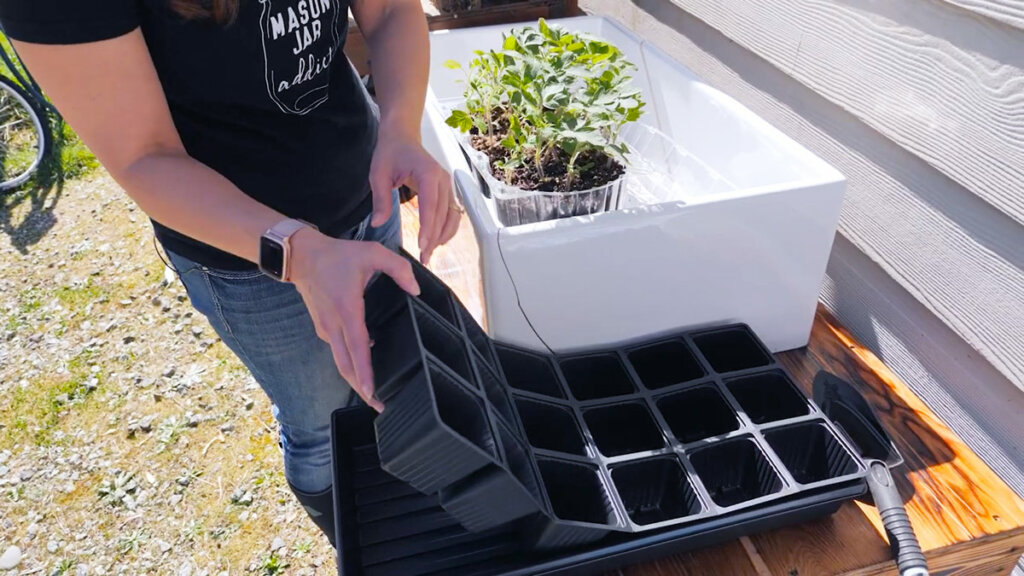
Potting Up Seedlings
Choosing the Right Size Container
As your plants continue to grow, they’ll need adequate space in their container. It’s good to know about how long your plant has before getting transplanted out into the garden to get an idea of how big a pot you’ll need.
In the video above, I’m potting up my tomato seedlings, which still have at least four weeks before they can go out into the garden, so I’m using a container no smaller than 4 inches wide. (I also like to use these trays that allow for bottom watering.)
If you have longer to go, you may want to choose a container between 6-8 inches in diameter to accommodate the roots.
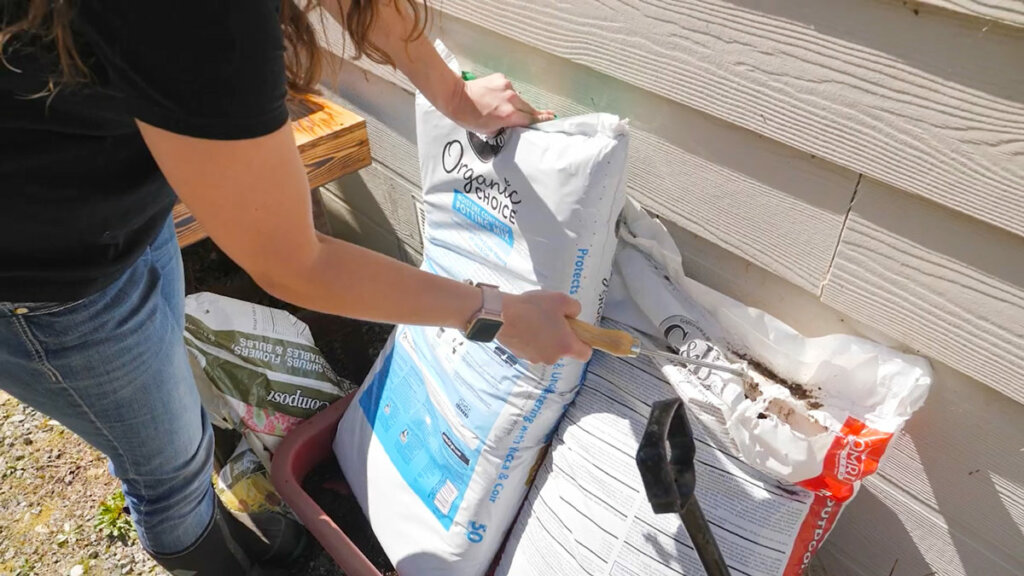
Using the Right Soil
Because our plants are still small and in need of proper nutrition, I like to use potting soil not soil from the garden. This ensures I won’t bring any gnat or fly eggs into my home where they’ll hatch and make a mess. (This also holds true for any open bags of potting mix from the year before where bugs had access.)
I also recommend using certified organic or OMRI (Organic Materials Review Institute) potting soil. I can buy this at my local Costco for a very inexpensive price. I always buy one bag per year, just for potting up my seedlings.
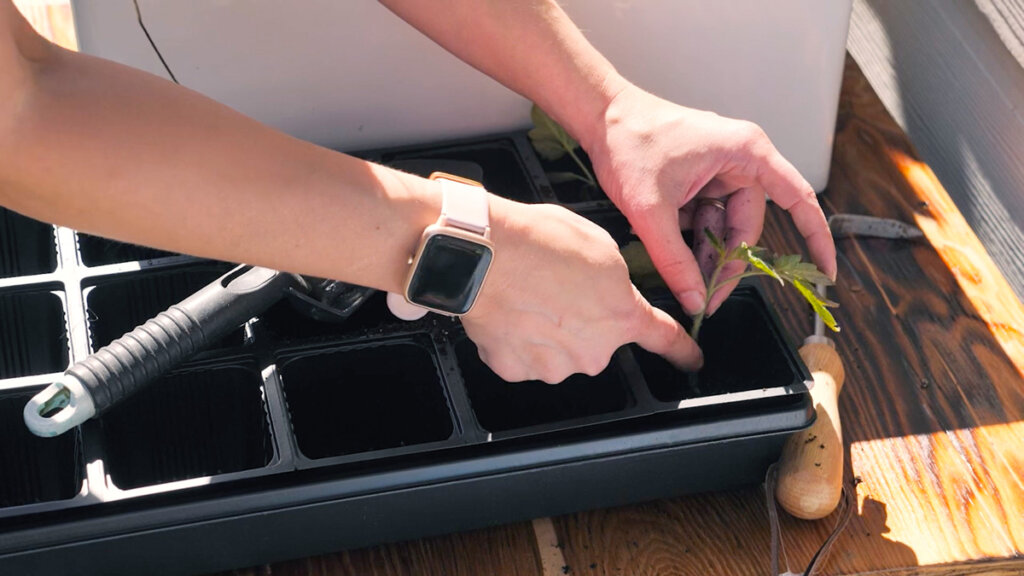
Plant Seedlings Deep (Maybe)
This holds true for most seedlings, but most importantly your tomatoes. I like to plant my tomatoes where the first set of leaves are. The first set of leaves aren’t the plants true leaves, and they’ll actually turn yellow and fall off on their own after a few weeks, but if they’re still on the plant, I like to remove them and plant my tomatoes right up to that level.
Tomato stems are pretty amazing because any part of the stem that’s under the soil will begin to produce roots. We want our tomato plants to have a very strong root system, so potting them up and allowing them to produce more roots gives us a head start.
Planting deep also holds true for any plants in the nightshade family (peppers, potatoes, eggplant, etc.), and many in the brassica family can handle planting deep (at the first set of leaves).
However, this planting deep theory doesn’t hold true for all plants. If you saw this post on when and how to plant fruit trees you know that you should always keep the soil level the same.
This holds true for growing beans as well, and some say that cucumbers don’t like to be planted deep, but I tend to just direct sow my cucumbers outside anyway, as I’ve done some side-by-side comparisons and the direct-sown seeds always catch up to the seedlings that I started indoors.
Ultimately, if your seedlings get adequate light from the start, they shouldn’t get leggy or need to be planted too deep anyway.
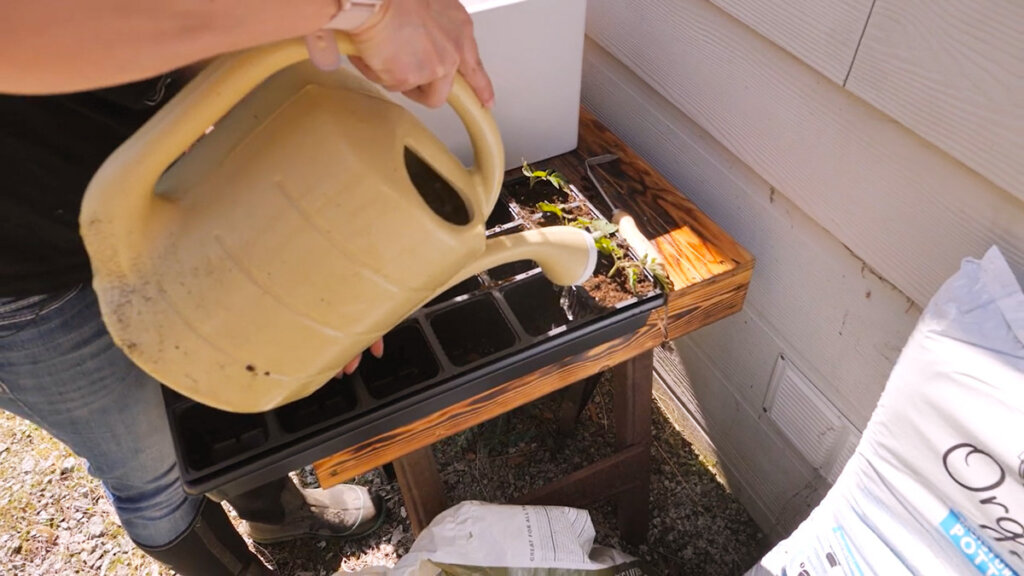
Water
In order to prevent your plants from getting stressed, you want to be sure to get them adequate water as soon as possible.
I will actually water my plants as I go along, instead of waiting until I’ve potted up an entire tray. After this initial watering, I will switch from spraying and watering overhead to bottom watering. I do this to avoid any fungus from growing on my plants and to promote a deeper root system.
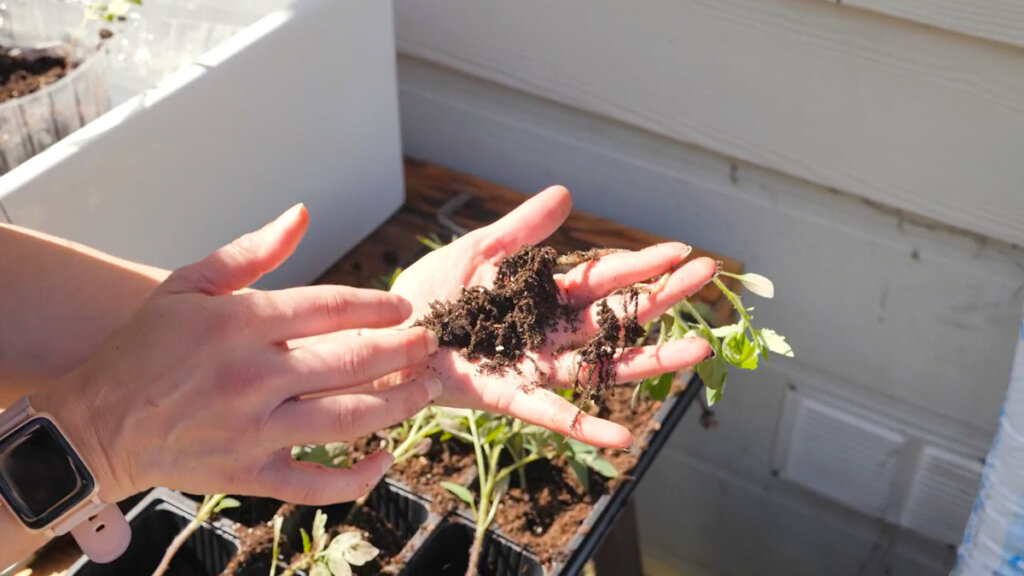
Choose the Healthiest Seedlings
I always start more seeds than plants I’ll need in the garden. I do this, first of all, because seeds are very inexpensive and I want to make sure I get enough seeds to germinate for the number of plants I want to grow.
Second, I like to plant extra seeds so I can choose the heathiest and strongest seedlings for potting up. To do this, I not only look at the height and leaves of the plant, but I also take a good look at the root structure.
Even if a plant is taller than another, if it has a stronger root system, I will choose to pot up the one with stronger roots. (In the photo above, you can see the plant on the left has a much stronger root system than the plant on the right, even though the plants themselves were about the same size.)
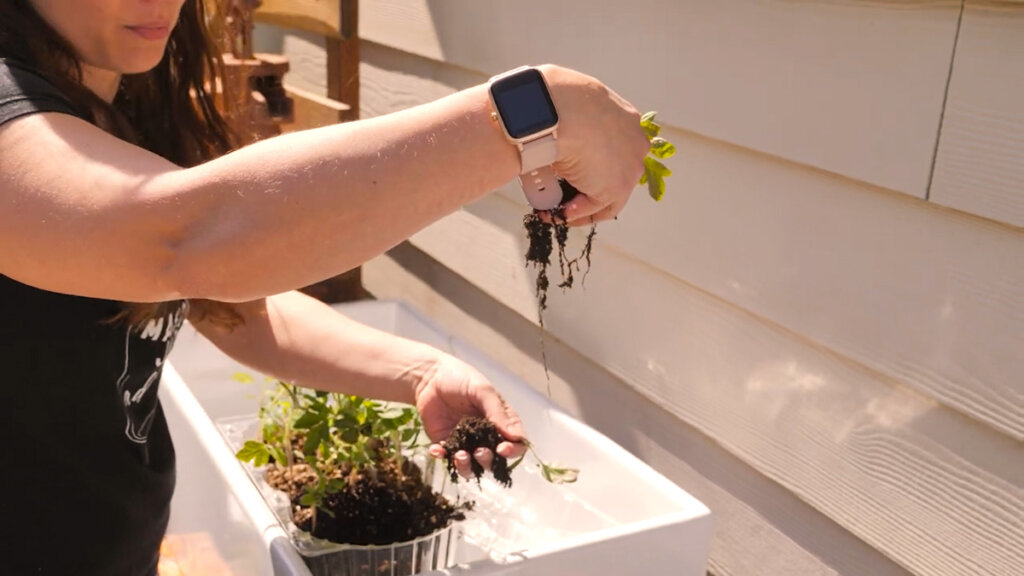
Avoid Rootbound Plants
One of the things I do when starting seeds indoors is to use clear plastic clamshell containers. Not only does this allow me to get a greenhouse effect while my seeds are germinating, but it also means I can keep an eye on my seedling’s roots to avoid them becoming rootbound.
The term “rootbound” is used when a plant has outgrown the container that it was planted in. Oftentimes this means the roots have circled around the container and become a tangled web of roots.
Certain plants don’t like their roots being messed with, so if your seedlings become rootbound, and you go to pot them up or transplant them into the garden, you may stunt their growth or they may even die.
Furthermore, if the root system can’t be untangled, this will keep the roots from growing out into the ground once transplanted into the garden. Because the strength of the plant relies on the strength of its roots, this doesn’t set your plants up to be productive.
We obviously want to avoid this if at all possible, we don’t spend weeks on end tending to tiny plants only to have them die, am I right?
Ideally, you’ll pot up or transplant your seedlings before they outgrow their container.
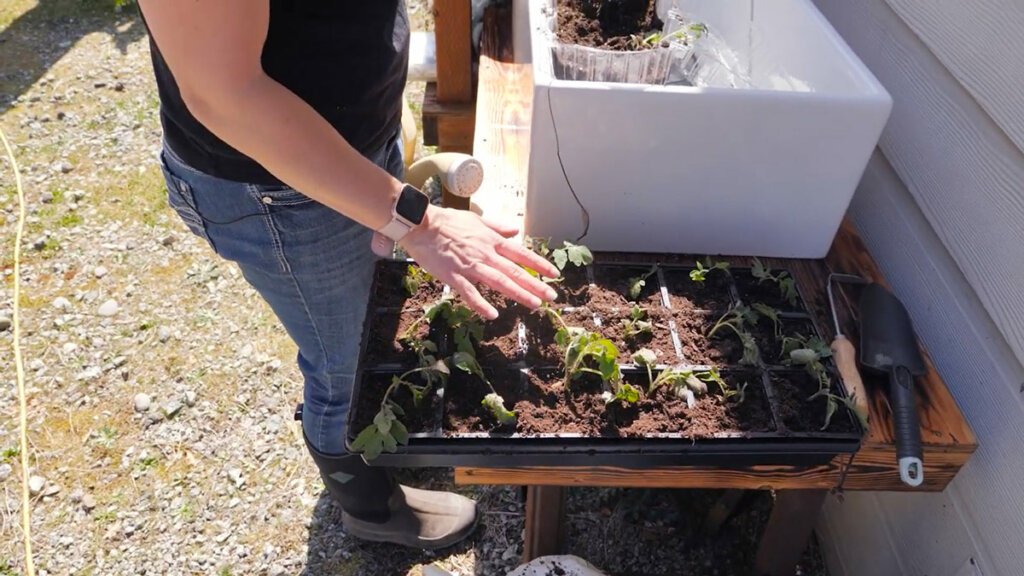
FAQs
Why do my plants look like they’re dying after potting up?
After repotting your plants, they may look a little sad, stressed, and droopy. This is to be expected as they’ve just had their environment disrupted.
Be sure to get them water as soon as possible, and get them back into their normal environment (if you’re doing your potting up outside as I am).
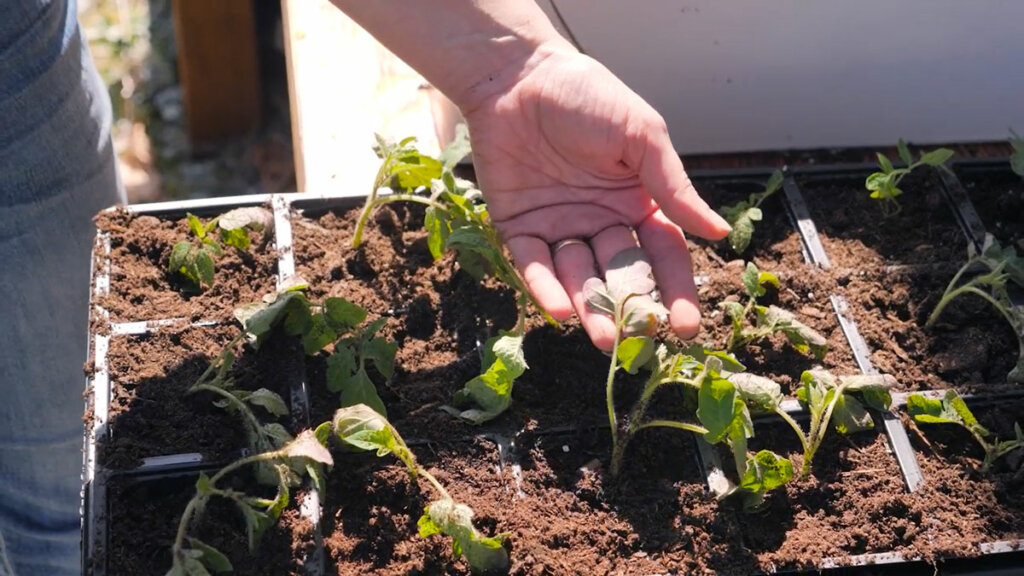
Why do my tomato plants look purple on the leaves?
This is a sign of a nutrient deficiency, usually it means they’re low in potassium. If you overcrowd your pots when starting seeds, the seedlings may use up all the nutrients before you’re able to pot them up.
They should do better by getting them into fresh potting soil and watering them with a bit of fertilizer.
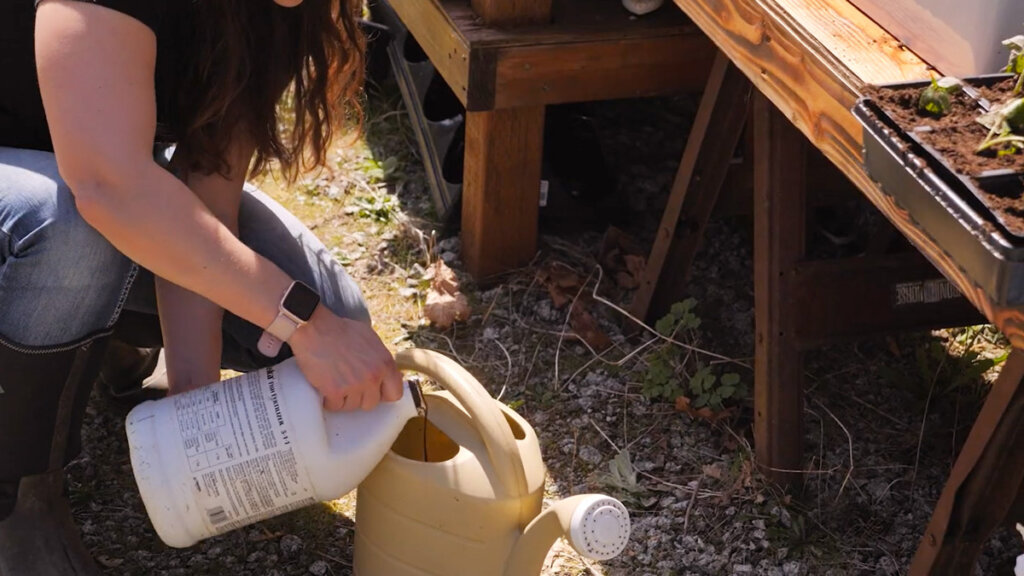
Do I need to fertilize my seedlings?
This answer will vary depending on the plant, how densely you planted the seeds, whether you’ve thinned out the seedlings, and if your plants are giving you signs of nutrient deficiencies.
After about 2-4 weeks, most plants will likely benefit from some type of fertilizer. I like to use a fish fertilizer that won’t burn my plants. It’s a 5-1-1 mixture, which means the ratio of “N-P-K”, or nitrogen, phosphorus, and potassium.
All-in-all, potting up seedlings is likely going to be something that you need to do at least once if you’ve started your seeds indoors. Hopefully this post was helpful and alleviated some of your fears of potting up or transplanting your plants.
More Articles to Get Your Garden Off to a Good Start:
- Beginner Gardening Secrets You Need to Know
- 5 Gardening Myths on Raising a Years Worth of Food
- 13 Basic Steps to Starting a Vegetable Garden
- Where to Buy Heirloom Seeds – Heirloom, Hybrid & GMO Differences
- Seed Packet Information – How to Read Seed Packets for Gardening Success
- The Ultimate Seed Starting Guide
- Best Way to Germinate Seeds – How to Germinate Seeds Faster
- Cold Stratification of Seeds – Why & How
- What Are the Best Seed Starting Containers
- Direct Sow Your Garden Seed
- Heirloom Seed Saving & Gardening
- Gardening in April (Garden Tasks by Month)
- Plant Covers for Cold Weather Gardening: How to Grow Vegetables All Year
- How to Grow Food YEAR ROUND Using Covers (Hot & Cold Weather)
- Cut Back on Garden Diseases & Maximize Your Infrastructure Expansion (Don’t Waste Time or Money)
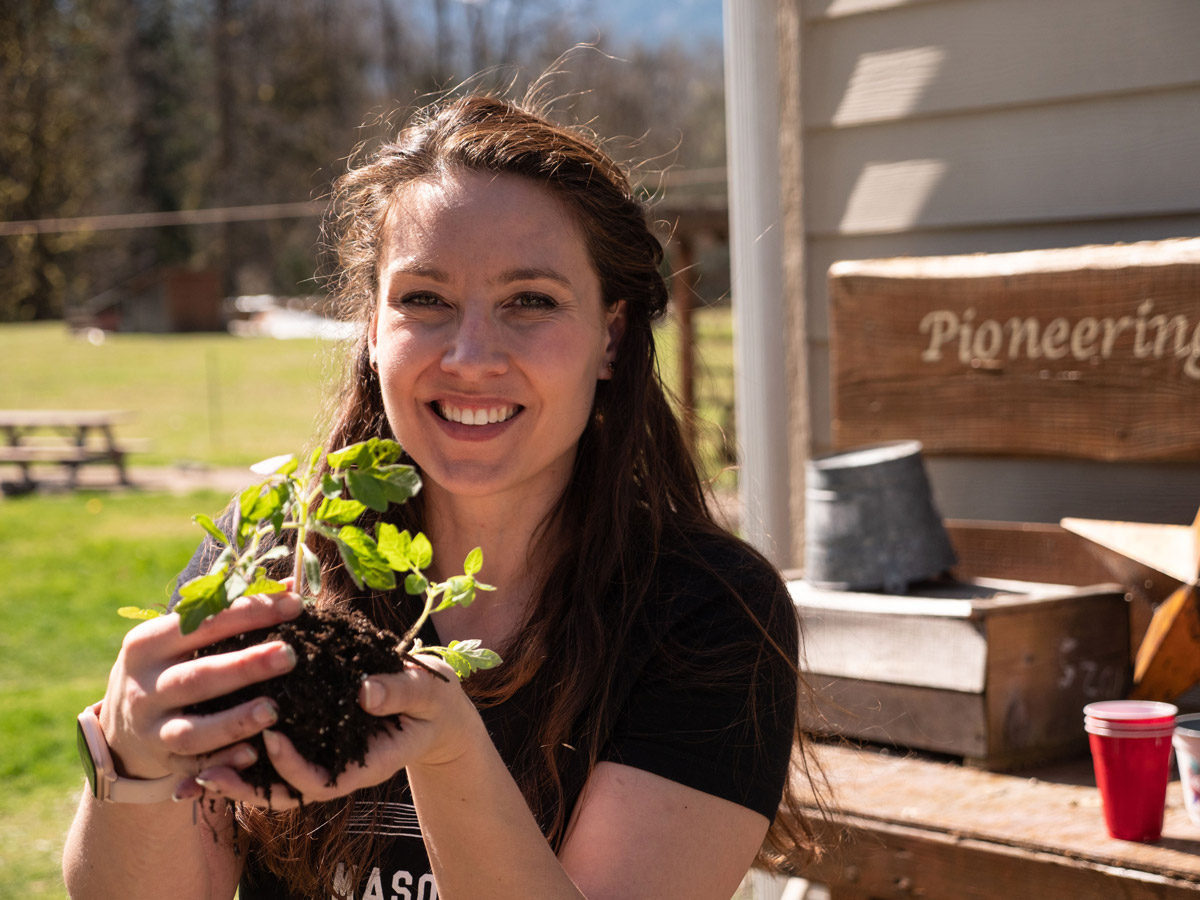
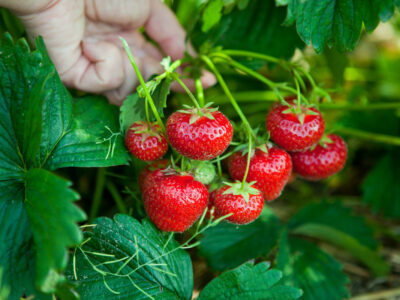


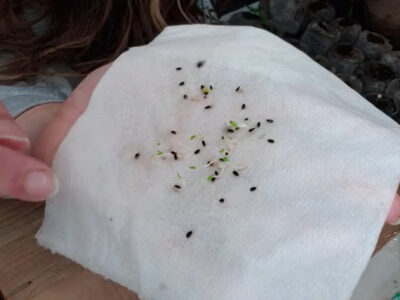

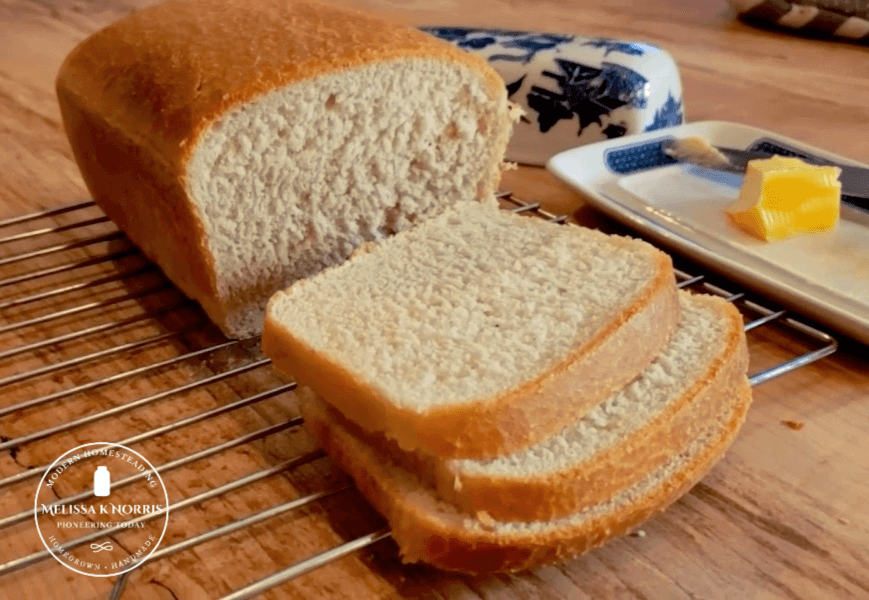
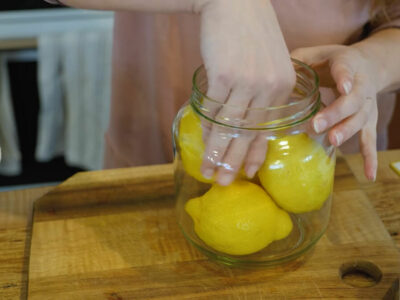



I have a small condo and I need to plant a vertical garden behind my condo which is pavement all tge way up to my back door. I’ve been looking at vertical planters on Amazon. I wondered if you had any suggestions? I plan to grow tomatoes, peppers, lettuce, spinach, and onions. If enough room would like a few strawberries and maybe potatoes in a bucket. Raised my kids on a small meat and vegetable farm. But now it’s just me. I still appreciate fresh produce. No meat animals. But my sister keeps me supplied in eggs. And I buy locally raised meat. I so enjoy your posts! Blessings.
Hi Melissa. I am having problems finding some of the content from email lessons and links, within PTA. For example in PTA I can find info on seed starting, but can not find the lesson on up potting within PTA.
It is frustrating when I know I know I saw a lesson, for example up potting seedlings, via an email link. Then the email is deleted. A month later, my seedlings are ready to be up potted so I try to find the up potting lesson in PTA, of which I can not find. And the email is long gone.
Can you please advise on how to find the up potting lesson in PTA?
Thank you and God bless,
Brenda
Hi Brenda,
You’re commenting on my regular website not inside the Pioneering Today Academy, inside PTA under Growing Your Own Fruits & Veggies there’s a seed starting module, potting up is in the lesson on containers https://melissa-norris.mykajabi.com/products/growing-your-own-fruits-veggies/categories/607907/posts/124870
Thank you! So much good information, as usual. Love your straightforward demonstrations!
Question: looks like your grow lights adjust up an down–can you recommend a brand? Grow light system? Or appropriate resources on setting up grow lights?
Thank you! So much good information, as usual. Love your straightforward demonstrations!
Question: looks like your grow lights adjust up an down–can you recommend a brand? Grow light system? Or appropriate resources on setting up grow lights?
Thank you for all the useful info. What type of structure are you using for your grow light? I like that you can adjust it effortlessly.
I also plant my seedlings in clam shell containers after I sprout them in damp paper towel and they have 2 green leaves. I started to use one clam shell with holes in the bottom where I plant the seedlings and another under it to hold the water. Then I can always water from the bottom and don’t worry about over watering. This is the first year for this method and it seems to work well. I am ready to repot some tomatoes so am happy to see you are also using clam shells. I think they are great cause it is recycling after I use the organic greens I get in them throughout the winter month.
Thank you for helping me understand.Peace out.
I need a price on your book starting from scratch and a price on your other books and videos you have for sale. You may have already received this request if so I’m sorry foe bothering you with it again. I just want you to know.
Hi Melissa,
I’m live in an apartment in DC and I’m trying to start my own deck garden. This is the second year I’m trying to grow (I’d rather not talk about last year). I’ve planted some seeds and had them in my window, because the weather has been so wild that I have dared to put them outside.
My spinach, brussel sprouts, tomato, and cilantro seeds have all taken off.
My basil, bell pepper, and potatoes, haven’t done squat (The potatoes I expect, I know they tend to grow later). I water them when the soil starts to get dry, they get a ton of sunlight, and I’m using a mixture of potting soil from this year and last.
I just don’t get why some are growing so well and others aren’t. Any ideas as to what I’m doing wrong?
Patrick
You might be a tad chilly for the basil and bell peppers. They tend to like a lot of warmth, though tomatoes do too. How long have they been in the same pots or soil? And how old are your seedlings?